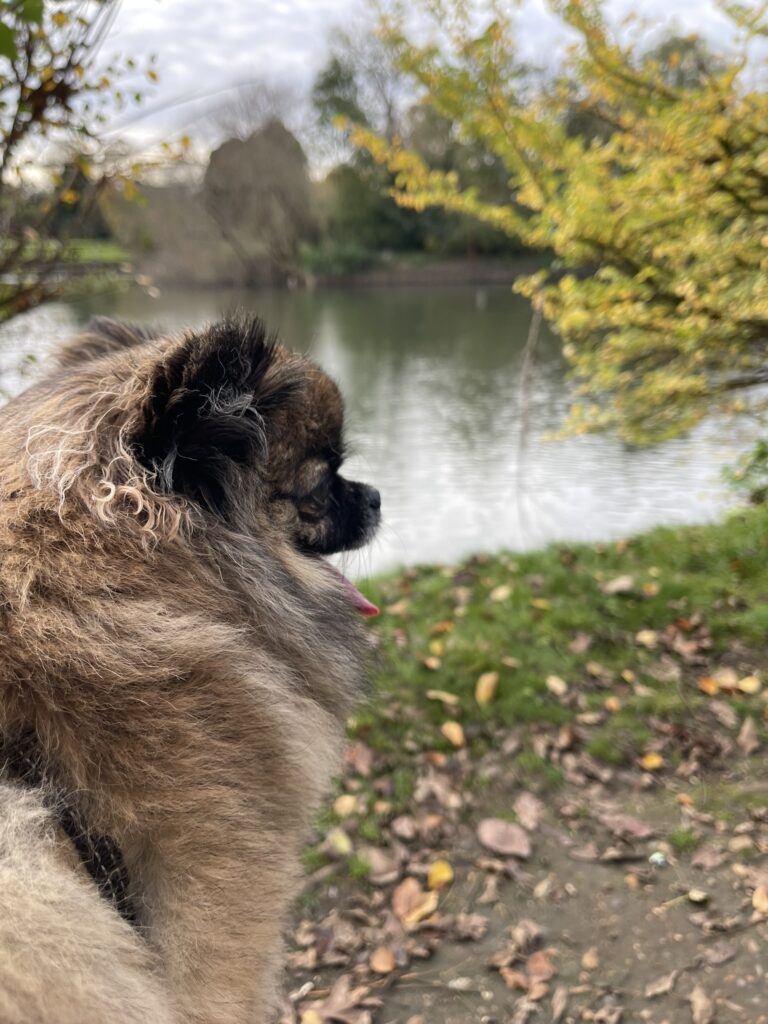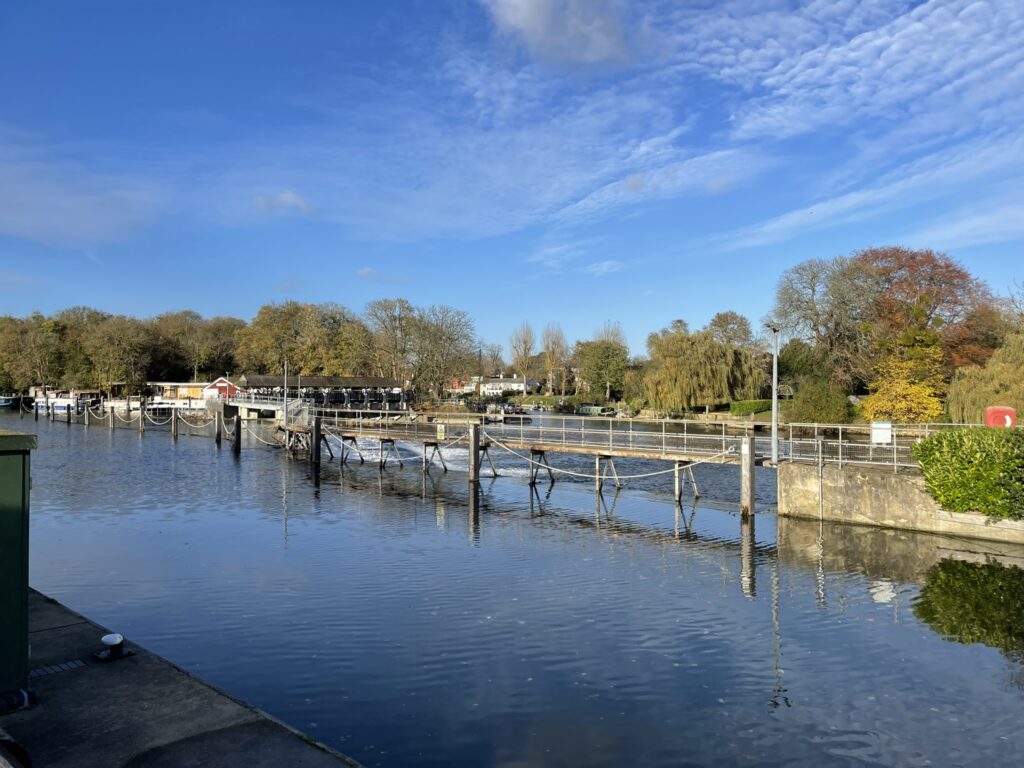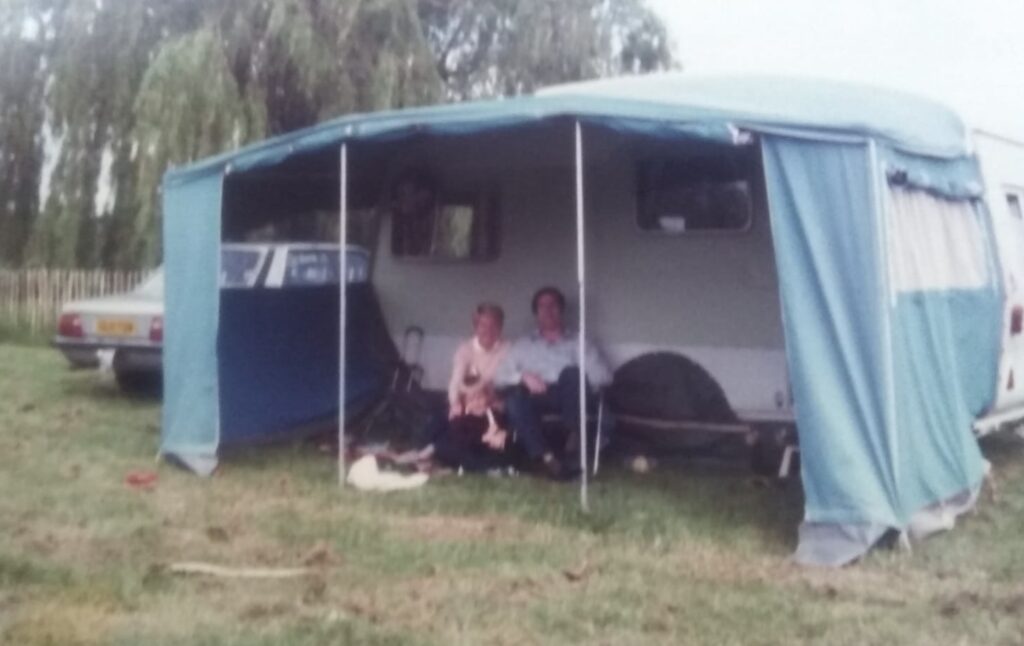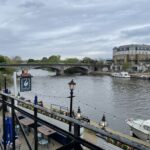Total Distance: 8 miles
Time: 3 hours 30 minutes
Points of Interest:
Kingston Bridge
Barge Walk
St. Raphael’s Church
Hampton Court Palace
Molesey Lock
Hurst Park
Garrick’s Temple to Shakespeare
Coal Tax Post 97
Sunbury Lock
Sunbury Weir
Walton Bridge
It’s been a few weeks since our last walk. I’ve had a couple of busy weekends, including the March for Clean Water that happened on the 3rd November. The clocks have also gone back since our last walk, and so the days are a lot shorter. This means we are having to head out earlier to get to our stating destination, which is getting further away after each walk.
We crossed Kingston Bridge, to the north bank of the Thames. This is the first time on the path that we had walked along the north bank. We also finally crossed the border of London and now into Surrey. We are finally out of London!!
Kingston is steeped in history. The name is derived from either ‘king’s town’ or ‘king’s stone’ and it is where King Egbert held a Great Council here in AD838. At least seven of the Anglo-Saxon kings of Wessex were also crowned here. The Coronation Stone can now been seen outside the town’s Guildhall. A bridge has stood here since around the 1190s. The current bridge was opened in 1828 by the Duchess of Clarence and is built of Portland stone and comprises of five elliptical arches.
We followed the path along Barge Walk, an historic towpath that has belonged to the Hampton Court estate for 500 years. Along the way on the opposite side of the river is St Raphael’s Church. The Church was built in 1848 in the Italianate style and was a family chapel for the Catholic Armenian Alexander Raphael. The church was sold after the Second World War and was officially consecrated in 2012.
A little further along we had our first rest stop, looking out over the river, the leaves of the trees in their autumnal colours.
We continued along Barge Walk, towards Hampton Court Palace. The building of the palace began in 1514 for Cardinal Thomas Wolsey, the chief minister of Henry VIII. However, Wolsey fell out of favour with the king, and so he gifted the palace to him. Over the years the palace has undergone a lot of rebuilding and expansion work, especially during the 1690s when William III extended the palace to try to rival the Palace of Versailles. The palace now has two contrasting architectural styles, that of Tudor and Baroque. That building work doesn’t seem to have stopped, as we arrived at the gates, there was some construction going on, but this time, not to the building. An ice rink was being built in front of the palace, ready for the festive season.

From here we crossed over the grade II listed Hampton Court Bridge towards Molesey. It was time to get another stamp for my Walk the Thames passport, so we stopped off at the Little H café for a bite to eat. The café has outside seating only, so you have to hope for a dry day to visit, but blankets are provided if it’s a bit chilly!
After our re-fuel, we continued along the path, passing Molesey Lock and along Hurst Park. The park was once home to Hurst Park racecourse, which was laid out in 1890 and held its last race in 1962. In 1913, the suffragettes Clara Elizabeth Giveen and Kitty Marion set fire to the racecourse in retaliation for the death of Emily Wilding Davison, who died after being trampled by King George V’s horse during a protest in 1913. A lot of the racecourse was sold off for housing, but a public park was kept along the riverside.
As we continued along the path, along the edge of Hurst Park, I spotted a domed building on the opposite side of the river. This is Garrick’s Temple to Shakespeare. The actor David Garrick had the octagonal folly built in honour of the playwright in 1755. The temple’s interior is a shrine to Shakespeare and includes a statue of the bard that cost 300 guineas (£315, equivalent to approximately £32,000 now). It was given Grade I listed status in September 1952 and became part of a conservation area in the 1960s.
Leaving Hurst Park behind us, we moved on towards Sunbury. Along our way, I came across this post with an inscription on it. These posts mark the point past which coal and wine taxes were due to the City of London and can be found all along the boundary. Until the 19th Century, the transport of coal and other goods into London had been by sea. But the growth of the canal and railway systems meant that collecting points for taxes had to be set up beyond the boundary of the City. An official would be stationed by the posts to record the tonnage and collect the duty. The inscription ’14 & 15 VIC / C 146′ is shorthand for ‘the 146th Act of Parliament passed in session held during the 14th and 15th regnal year of Queen Victoria’. This Act was the Coal Duties (London and Westminster and Adjacent Counties) Act 1851. The tax was finally ended by an Act of Parliament passed in July 1889. But although the law had gone, the tax posts remained, and many have survived.
The sun was starting to go down at this point, and we still had about a mile to go until we got to Walton. The path was pretty empty, absolutely no one around. It was quiet as well, no sound of traffic or planes, just the sound of birds flying off as I disrupted their peace. I love being out of London. We approached Sunbury Lock and Weir. This is where The King’s Swan Uppers begin their annual journey ‘Royal Swan Upping’ along the Thames, recording the swan population. This tradition dates back to the 12th Century. I counted zero swans today!
We finally reached our destination of Walton-on-Thames. The train station was another 30 minutes walk away, so I opted for an Uber!
Walton brings back some childhood memories. We stayed here, back in the 80s, on a caravanning holiday. Such happy memories, I think we must have done all the sights in London. The blurry picture on the right is me and my parents outside our caravan, I think my sister must have been taking the photo!
And so, another walk completed. My target of reaching Windsor before Christmas is getting closer, and I estimate that I have probably another two more walks to go. Then I can rest until the Spring, when finally the days will get longer and the weather a little warmer.


















